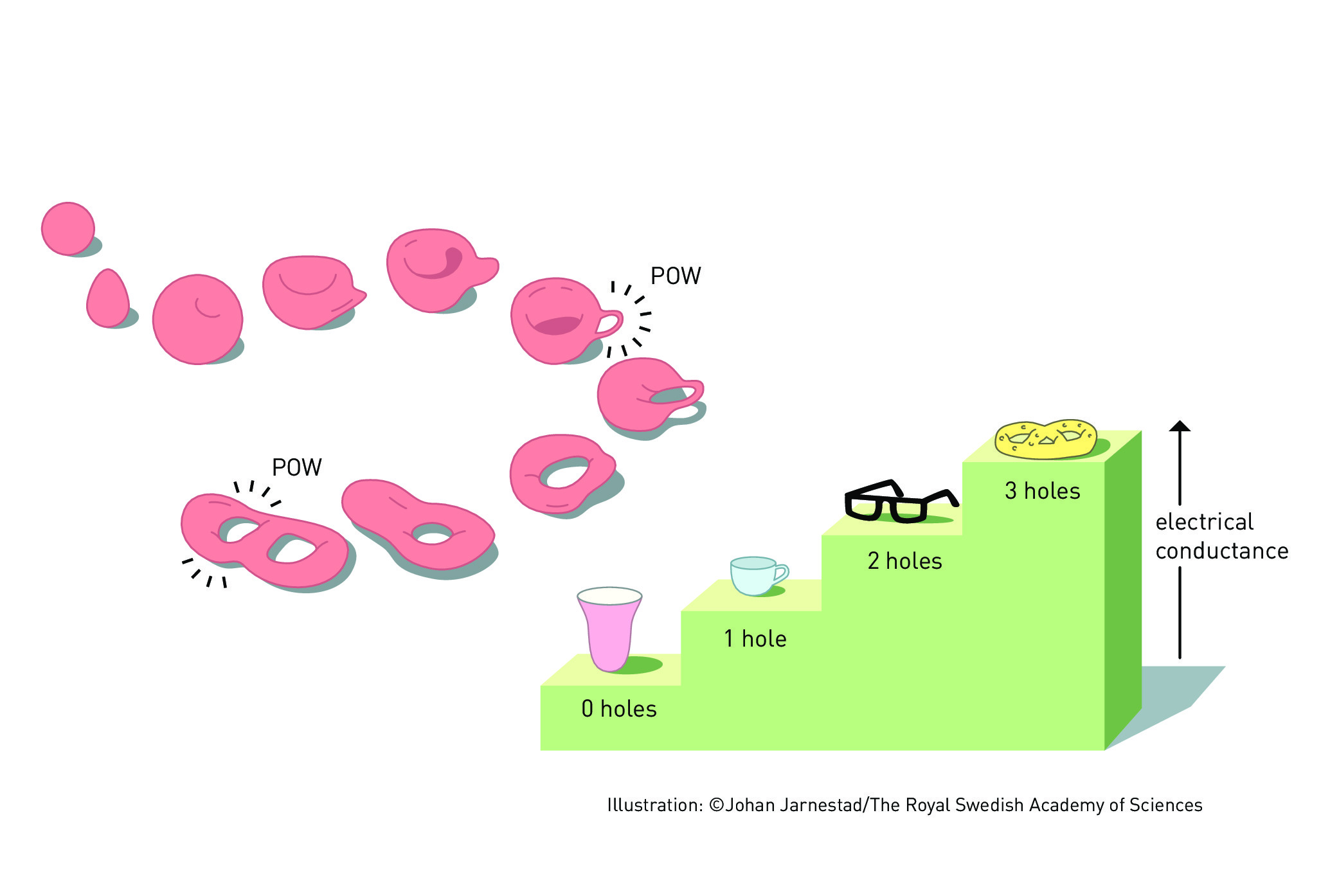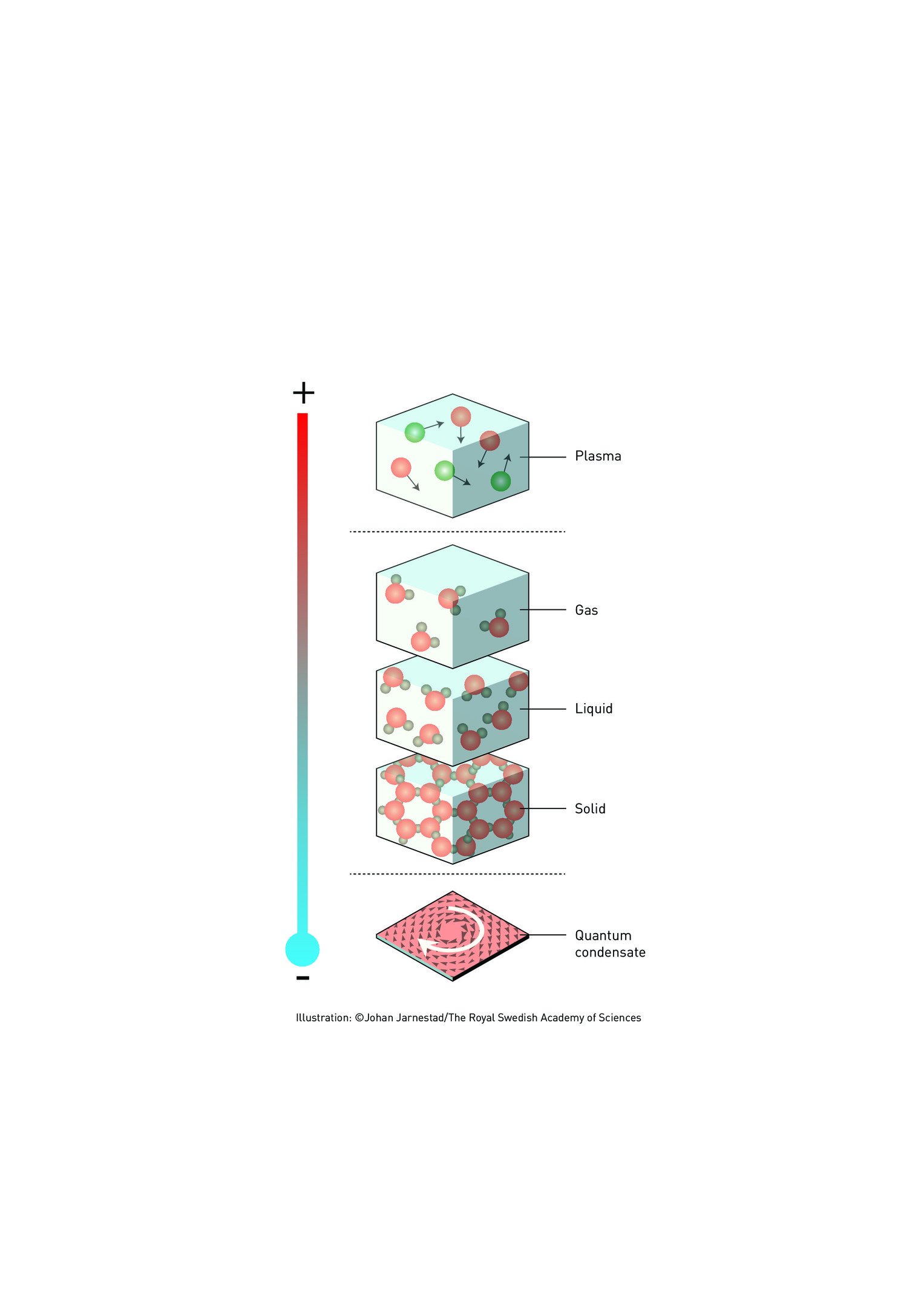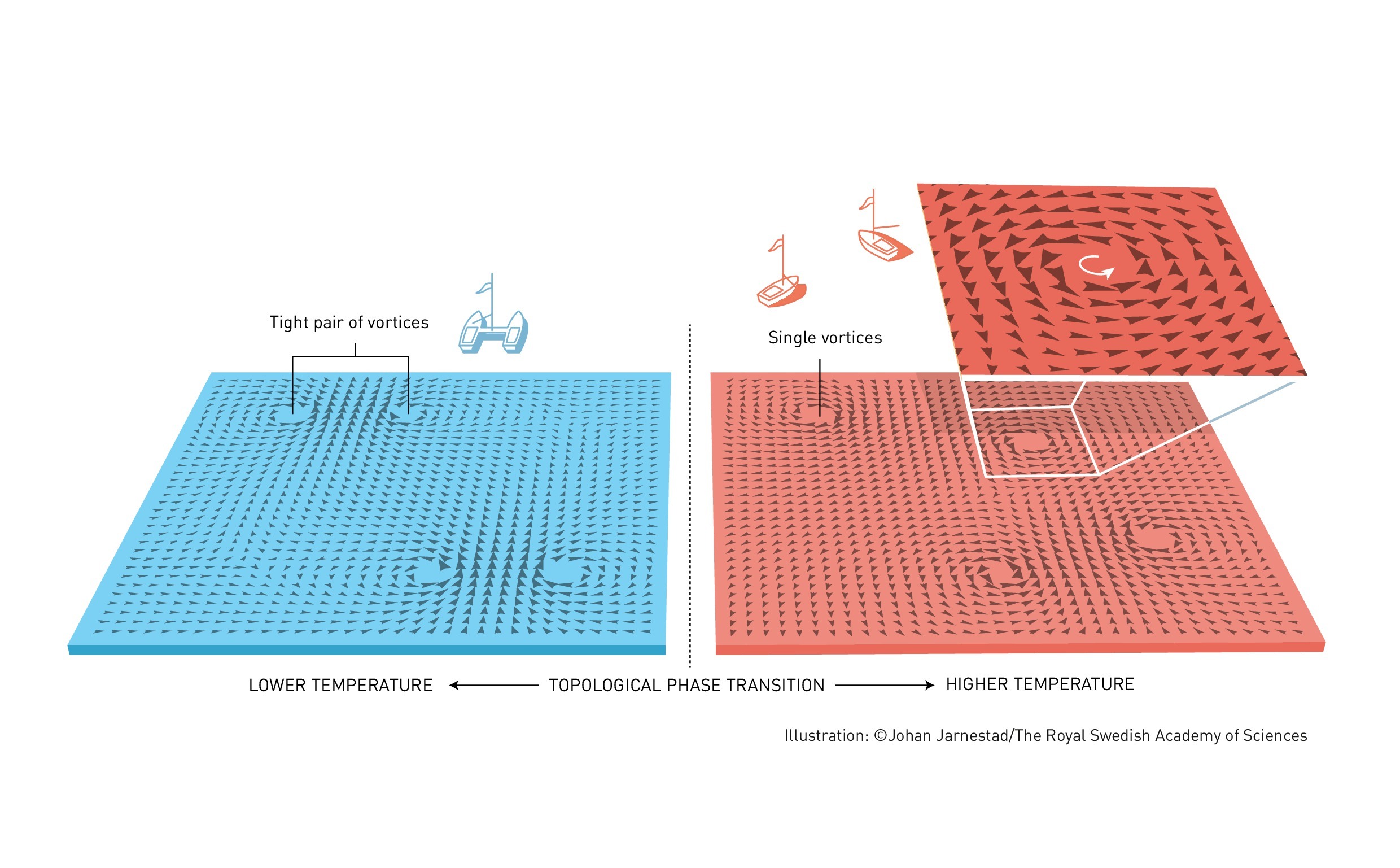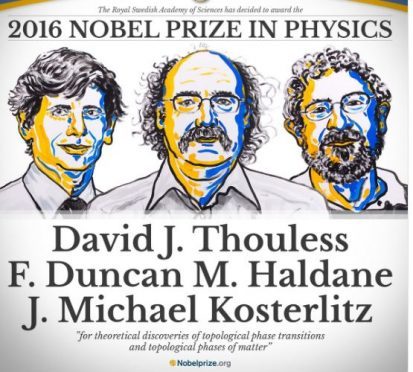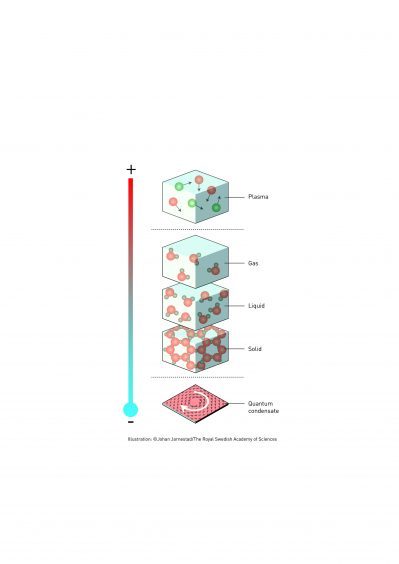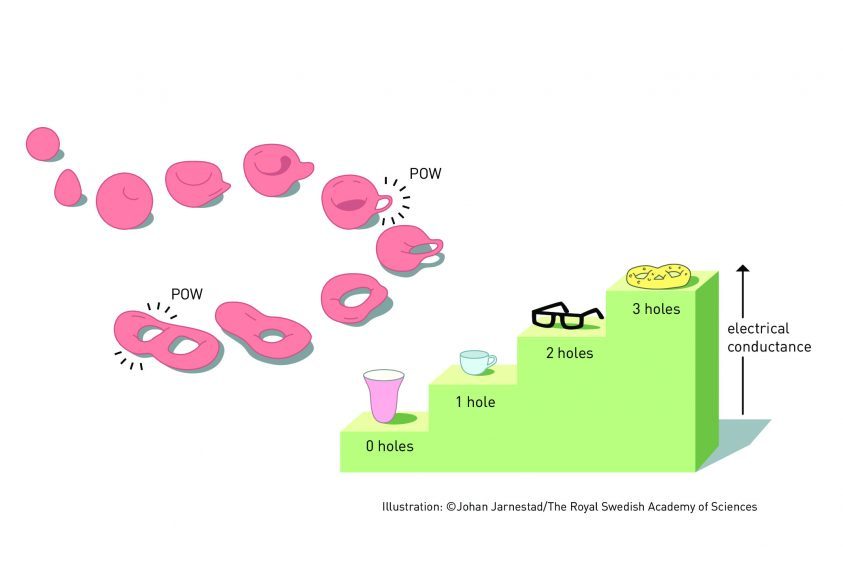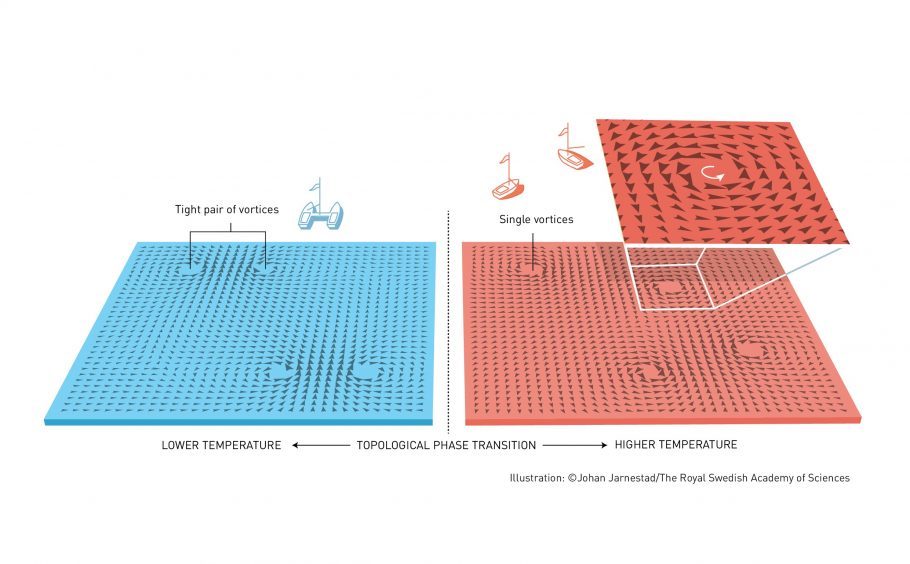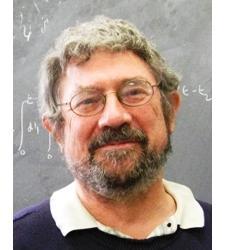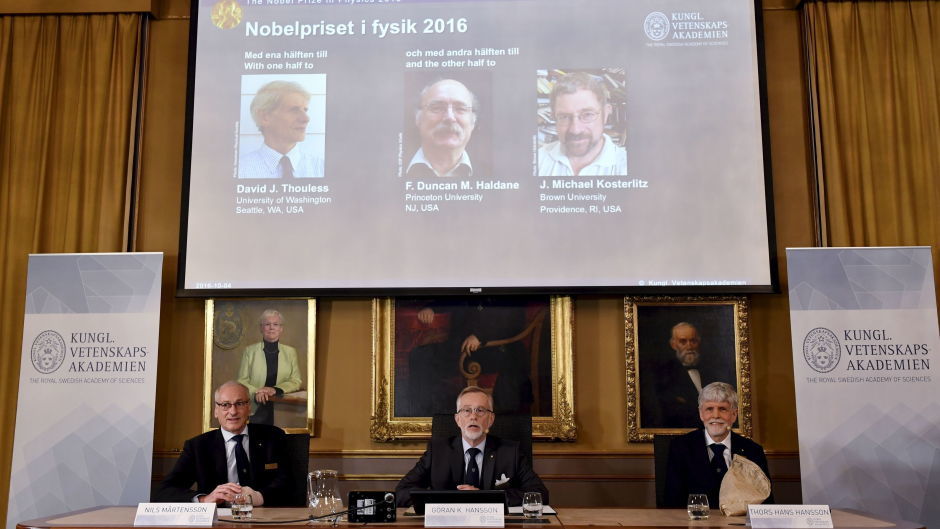An Aberdeen-born scientist has been awarded the 2016 Nobel Prize in physics.
Michael Kosterlitz joins British-born scientists David Thouless and Duncan Haldane as winners of the award, for work that “revealed the secrets of exotic matter”.
The three “opened the door” to an unknown world where matter takes unusual states or phases, the Royal Swedish Academy of Sciences said.
They were awarded for their “theoretical discoveries of topological phase transitions and topological phases of matter”.
Thouless, 82, is a professor emeritus at the University of Washington, Haldane, 65, is a physics professor at Princeton University in New Jersey, and Kosterlitz, 73, is a physics professor at Brown University in Providence, Rhode Island.
Professor Kosterlitz, who lived in Aberdeen until he was 16, is the son of celebrated University of Aberdeen scientist Hans Kosterlitz, who discovered enkephalins – the body’s natural painkillers.
Their research was conducted in the 1970s and 80s. Nobel judges often award discoveries made decades ago, to make sure they withstand the test of time.
A spokesman for the Royal Swedish Academy of Sciences said: “This year’s Laureates opened the door on an unknown world where matter can assume strange states.
“They have used advanced mathematical methods to study unusual phases, or states, of matter, such as superconductors, superfluids or thin magnetic films. Thanks to their pioneering work, the hunt is now on for new and exotic phases of matter. Many people are hopeful of future applications in both materials science and electronics.
“The three Laureates’ use of topological concepts in physics was decisive for their discoveries. Topology is a branch of mathematics that describes properties that only change step-wise.
“Using topology as a tool, they were able to astound the experts. In the early 1970s, Michael Kosterlitz and David Thouless overturned the then current theory that superconductivity or suprafluidity could not occur in thin layers. They demonstrated that superconductivity could occur at low temperatures and also explained the mechanism, phase transition, that makes superconductivity disappear at higher temperatures.
“In the 1980s, Thouless was able to explain a previous experiment with very thin electrically conducting layers in which conductance was precisely measured as integer steps. He showed that these integers were topological in their nature. At around the same time, Duncan Haldane discovered how topological concepts can be used to understand the properties of chains of small magnets found in some materials.
“We now know of many topological phases, not only in thin layers and threads, but also in ordinary three-dimensional materials. Over the last decade, this area has boosted frontline research in condensed matter physics, not least because of the hope that topological materials could be used in new generations of electronics and superconductors, or in future quantum computers. Current research is revealing the secrets of matter in the exotic worlds discovered by this year’s Nobel Laureates.”
